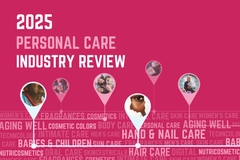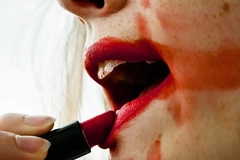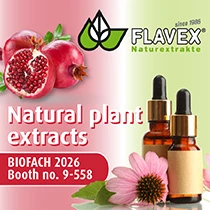Cancer concerns: WHO and IARC deem talc “probably carcinogenic” in new evaluation

09 Jul 2024 --- The International Agency for Research on Cancer (IARC) and the cancer agency of the World Health Organization (WHO) conclude that talc, found in makeup body powders, is “probably carcinogenic to humans.”
The Working Group of 29 international experts based the classification on a combination of limited evidence for cancer in humans (for ovarian cancer), sufficient evidence for cancer in experimental animals and solid mechanistic evidence that talc exhibits key characteristics of carcinogens in human primary cells and experimental systems.
They say the best-documented exposure to talc-containing cosmetics and body powders is in the general population — however, exposure to food, drugs and other consumer products is likely, although less well documented.
Ovarian cancer risk
Exposure to talc can also occur in occupational settings during the mining, milling or processing of talc and the production of talc-containing products.
The report says that due to the challenges of accurate measurement, contamination of talc with asbestos may still be a concern and may lead to exposure of workers and the general population to asbestos. It cites contaminated talc-based makeup and body powder as examples.
 The WHO and IARC investigate whether talc is cancerous.Numerous studies consistently showed an increase in the incidence of ovarian cancer in humans self-reporting the use of body powder in the perineal region. Although the evaluation focused on talc not containing asbestos, contamination of talc with asbestos could not be excluded in most of the studies of exposed humans.
The WHO and IARC investigate whether talc is cancerous.Numerous studies consistently showed an increase in the incidence of ovarian cancer in humans self-reporting the use of body powder in the perineal region. Although the evaluation focused on talc not containing asbestos, contamination of talc with asbestos could not be excluded in most of the studies of exposed humans.
In addition, IARC could not rule out biases in how talc use was reported in the epidemiological studies with reasonable confidence. As a result, a causal role for talc could not be fully established.
An increased rate of ovarian cancer was also observed in studies looking at the occupational exposure of women exposed to talc in the pulp and paper industry. However, confounding by co-exposure to asbestos could not be excluded, and the increased rate was based on small numbers of ovarian cancers in those occupational studies.
Talc-based lawsuits
Personal Care Insights recently reported that only one week after agreeing to pay US$700 million to settle an investigation brought forth by multiple US states, Johnson & Johnson (J&J) now faces yet another potential class action — this time, with claimants demanding damages and medical monitoring for women who were diagnosed with cancer or who may get the disease in the future.
The claimants allege the cancer is a result of using J&J’s baby powder and other products containing talc. The proposed class action would be the first request for testing of female talc users in the US.
J&J has long maintained that its products are safe, asbestos-free and do not cause cancer.
The latest lawsuit does not involve the more than 61,000 individuals who already filed personal injury lawsuits against the pharma giant, claiming its talc contains cancer-causing asbestos. Talc can be found in makeup products.
Talc can be found in makeup products.
In 2022, J&J said it would halt sales of talc-based baby powder and transition to cornstarch-based baby powder to meet “evolving global trends.”
Animal experiments
In experimental animals, treatment with talc caused an increase in the incidence of malignant neoplasms in females (adrenal medulla and lung) and a combination of benign and malignant neoplasms in males (adrenal medulla).
The IARC Monographs use key characteristics of carcinogens (KCs) to systematically evaluate the mechanistic evidence of substances’ carcinogenicity. Strong mechanistic evidence showed that talc exhibits KCs, including inducing chronic inflammation (KC6) and altering cell proliferation, cell death or nutrient supply (KC10).
In reviewing the experimental evidence, the Working Group included only studies in which contamination of the talc with asbestos was highly unlikely.
By Sabine Waldeck












